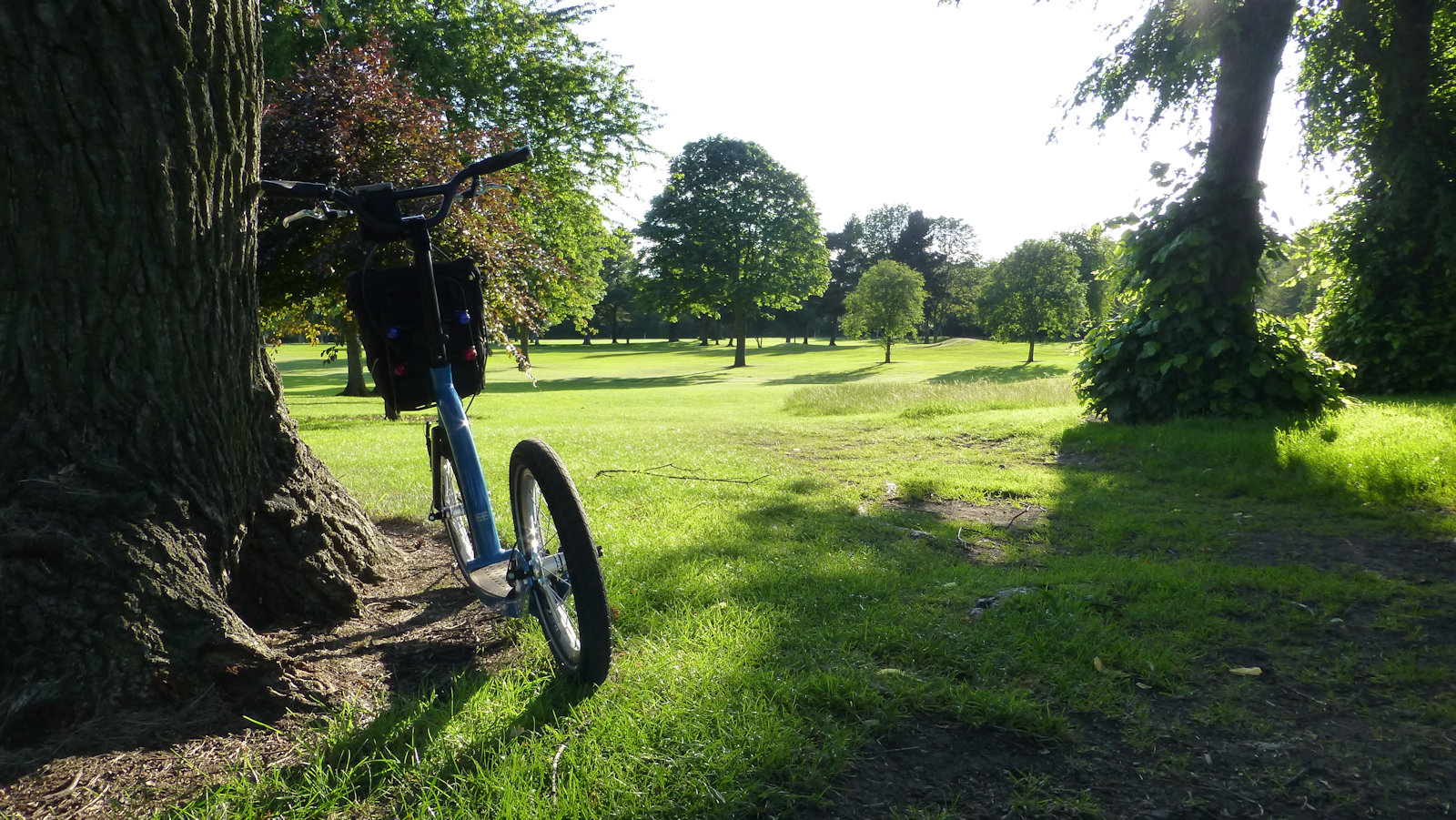A kick scooter can go many places but lacks the ability of the bicycle to go just about anywhere. With a kick scooter I tend to find myself searching for locations that are relatively flat, though some ups and downs are acceptable, and the terrain not too rough. Golf courses fit the bill just about perfectly.
There are a number of local golf courses near then house, all an easy scoot away, but there’s a problem with them all. Yes, you’ve guessed it, golfers playing golf! It’s not really feasible to scoot across the course when play was in progress. Even using existing tracks or trails during that time was a no-no. But, donning the old thinking cap, it did not take long to come up with the solution, well, as long as it took to down a coffee and scoff a four-fingered Kit-Kat. The answer was wait until the sun set over the distant hills, the night set in and the moon came out to play. Go out at night.
There are a number of features I like about golf courses for kick scooting. Firstly, there are usually existing tracks and trails that can be followed, either used by the golfers themselves moving around the course, the groundsmen going about their important business of caring for the greens, tees and fairways, or simply providing access for the general public. All these can be easily scooted.
Another feature that is good for scooting are the fairways themselves, mostly well-tended, usually free from hazardous plants such stinging nettles, brambles and thistles (I scoot barefoot whenever possible) and generally suitable for scooting, though in most cases some effort is required as the grass can be quite deep or thick in places. You really need to use larger tyres on your scooter and I would recommend the biggest you can fit, such as Maxxis Hookworm 16″ x 1.95″ or Schwalbe Big Apple 16″ x 2.00″, anything narrower makes for hard work. As a rule I always keep to the edge of the fairway, and always, always, stay clear of the greens and avoid the bunkers. Stay off the course after heavy rain, when the course may be waterlogged and you will damage the fairway. Only visit in dry conditions.
If out at night you will need lights, but I’ve found that once you get to know the course, you can usually switch them off. The courses I frequent are near towns and there is usually enough light-spill from nearby street lighting to see my way and at night when the moon is full and the sky free from clouds, it’s almost like scooting in the day-time. Not using lights avoids attracting any unwanted attention and you to tend to encounter more wildlife such as deer, foxes and rabbits.
Of course, if you will excuse the pun, there are hazards to watch out for. If there are trees present, twigs and branches need to be avoided, course furniture may also be present and drainage ditches can sometimes be difficult to see in the dark. One good tip I can suggest is to use the satellite images available on Google to familiarise yourself with the course layout before you venture out. Look out for any existing paths you can use and hazards to avoid. Finally, you may find that grass cutting, particularly if wet, can be thrown up by the tyres and can accumulate around the forks and brakes and may need cleared by hand.
Copyright ©2020 Gary Buckham. All rights reserved.


